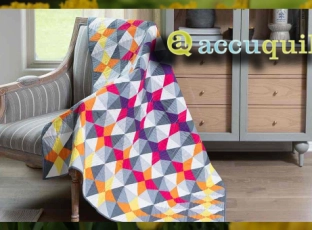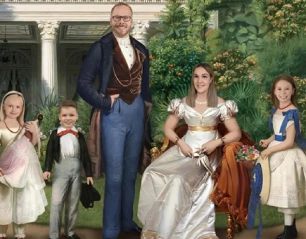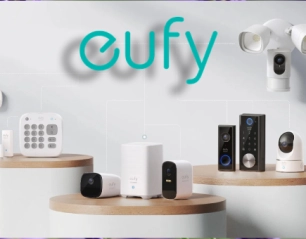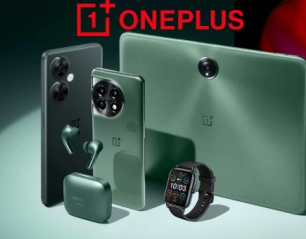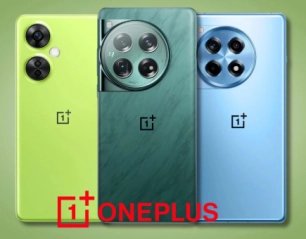Social Media is ever-evolving. From its beginning as a way of keeping in touch with friends and family to very much becoming a core part of a business strategy and entertainment, activism, social media has changed the way the world hears from us. Social media keeps on changing fast with how users adapt to technological advancements and changing cultural attitudes. This article will highlight a few of the major trends seen in social media in recent years to what is shaping the future of digital communication.
Short-form video Content Continues to Dominate
Even being a short form of content, videos have been powerful messengers in social media, and are only seen growing stronger this year. These days such companies as TikTok, Instagram Reels, and YouTube Shorts are changing the paradigm of content production by focusing on videos that’ll be short yet very interesting. They do that because it fits the user’s new shorter attention span and provides entertainment and the necessary information in short bursts. TikTok is the main protagonist of this trend, and such an operational model provides for viral content to be created. In today’s market for brands and influencers, short-form video is a perfect way to engage the audience. This field gives a business a shot at creativity and freedom to experiment with new formats such as memes, challenges, and tutorials with a focus on the younger and more alive audience.
Social Commerce in Bright Facade
Social commerce has been steadily gaining popularity, and this year it has reached a fever pitch. This platform feature makes it possible to integrate online shopping within social networks: allowing users to buy products directly from these networks online without leaving them. Instagram, Facebook, and TikTok have all built shopping features right into their apps. Thus, in this regard, social media has become truly a thriving marketplace. It is the revamping of how social commerce is transforming the ways brands now distribute their wares through online retail. In this regard, live-stream shopping has now become part of the trend; there is nearly no inventory unlocked without being marketed by live-streaming influencers and brands in 2025. The incorporation of features such as social media into shopping makes it even easier for customers to buy while allowing brands to connect better and in a more personal way with potential buyers.
Enhancing experiences via Augmented Reality technology
Increased advancement in the technology of Augmented Reality (AR) has made it an integral experience in social media today. In 2025, augmented reality is now much more than filters and fun effects; it has become a major driving force in brand engagement and product visualization. Companies utilize it to create immersive experiences to allow users to interact with their products in new and innovative ways. Augmented-reality virtual try-ons are one interesting thing that fashion brands have introduced to their customers. In this case, a customer can use an AR application to see how a particular piece of clothing or accessory will appear on he or she before they purchases it. Similarly, furniture companies are allowing clients to visualize virtual furniture pieces in their homes through AR. Such practices are changing consumer purchase decisions, and the trend is expected to grow as technology improves.
The Rising Podcasts and Audio Content
The past years and the current year, have recorded a great impact on the outburst of podcasting among people. Podcasting has changed the way we consume things by elevating what was termed as audio to become one of the main forms of media through social media platforms that have now rolled out new features, such as Twitter Spaces and Instagram's audio clips, which give users the ability to have live, unscripted conversations with others, thereby creating community and interactivity. Branded or independent podcasts, which broadcast long-form programming on several topics, continue to be an extremely popular form. Other platforms offer access to podcasts on their platforms, allowing users to more easily find and connect with audio content at the level of social media. Probably one of the most intimate methods to connect and communicate with the audience would be by talking to them about the subject matter or even the philosophy of the brand through podcasts.
The Emphasis on Authenticity as well as Transparency
Rather goes to becoming an increasingly polished and curated social place, with a louder today's cry for authenticity. It has sounded among users who want content that seems real and relatable, even unfiltered. The affinity seems to lean heavily on younger audiences, who have grown cynical of such hyper-polished or sponsored material. Influencers, therefore, as well as brands, are having to adopt a more authentic and transparent approach to content-making. Reputation-increasing favor with consumers comes to brands that prove authenticity either by displaying behind-the-scenes content, keeping an honest stance for their values, or having unedited moments. This trend is not just limited to content creators but has also compelled the attention of big corporations to place more value on transparency in terms of their manufacturing processes, sustainability efforts, and corporate social responsibility initiatives.
Social media activism
We have learned about social and political activism in terms of social media usage over the years, but now, its vibrant role in societal change has led many to question how intensively social media is involved in such activities. Institutes nowadays, one would say, have centered themselves on organizing protests, activism to raise awareness about social issues, and amplification of those voices among the underrepresented. In a few years, such as 2025, movements surrounding environmental sustainability, racial equality, mental health awareness, and others have grown tremendously. Users will spend time on platforms not sharing a particular opinion but will take active measures—fundraising campaigns, signing a petition, or even educating others about important issues. Brands are also increasingly associating themselves with social causes; however, they should be careful about just treating things superficially, as audiences are quick to catch up on "performative activism."
Mental Hygiene and Digital Wellness
Inarguably with the increasing use of social media in daily living, concerns over their mental concerns become more acute. In reaction to that, one will find an increased number of initiatives on digital well-being. Several social media platforms put health-oriented features such as screen time trackers, content filters, and prompts within the app to remind users to take breaks. In the past years, the social-media conversation about mental health even expanded as users turned to look for wellness, mindfulness, and self-care content. Influencers and content creators are brazenly sharing their journeys with mental health to help de-stigmatize conversations about mental illness. The users also respond quite well to such brands with mental health initiatives or whose content creates awareness and positive mental health.
Influencer Marketing Changes
Influencer marketing is very much the game player of social media. "Instead of megastars or influencers with millions of followers, brands should partner with micro-influencers who have smaller, but still highly engaged, audiences," said industry experts. This allows brands to reach those niche markets while having a more authentic connection to their consumers.
Influencer marketing is also becoming more authentic because Instagram and TikTok have developed tools that allow their users to identify partners and sponsored content quickly. Audiences become more astute at recognizing authentic engagement, and this made the influencers pay attention to creating authentic, sounding-both sides content.
The User-Generated Contents Are on the Rise
UGC will become the backbone of social media marketing by 2025. Brands now encourage followers to create and share content about products and services. UGC is available in multiple formats, ranging from photographs or videos to customer reviews and peer testimonials case collaterals for advertising create a great deal of trust and relevance in the eyes of future consumers. The user-generated content did not stop there. It has since moved from advertising the specific brand into storytelling by using consumer-created content, allowing the co-creation of real-life experiences, or bringing about community-driven campaigns. It is UGC that resonates with customers and makes it a powerful marketing tool.
Video-First Content and Livestreaming
Video previously formed a major part of all social media sites, but as far as 2025 is concerned, these social platforms are focusing on nothing but video-first experiences. Real-time video consumption is huge these days, further magnified by Facebook Live, Instagram Stories, and TikTok livestreams. Now, it is up to the creator and brand to take the immediacy and intimacy of the live connection with their audience. Like stoppable live streams, which let users buy a product in real-time while watching an influencer or host discuss it, many of these new features are being added to traditional live streaming platforms. The new kind of real-time consumer experience not only enhances revenues; it also strengthens relationships between the brands and their viewers.
Conclusion
In 2025, the social media landscape will be a dynamic, multifaceted space that keeps changing at an unprecedented rate. From short-form video domination and the rise of social commerce to the growing importance of authenticity and mental health, social media has surely graduated from mere entertainment into an intimate instrument for introducing connectivity, leveraging commerce, and changing society. As change continues to evolve into today, businesses, content creators, and users among others would have to adapt to ever-changing social media trends to keep nip-head as well as connected in an increasingly digitized world. In the end, success will come through embracing innovation under the very fundamentals of authenticity, transparency, and social responsibility. Social media increasingly shapes how we communicate, consume, and engage, making it exciting to behold in years to come.
MUST READ THIS: TechTales: Exploring the Future of Artificial Intelligence
Frequently Asked Questions (FAQs)
Social commerce allows users to shop directly from social media without opening any other application for shopping, directly integrated with the shopping features into the social media app.
Short-form video content is appealing because most people have a very short attention span: time available for fast entertainment and fact-finding.
User engagement primarily happens through AR by allowing virtual try-ons of products or having brands come alive on social media.
Was this helpful?




